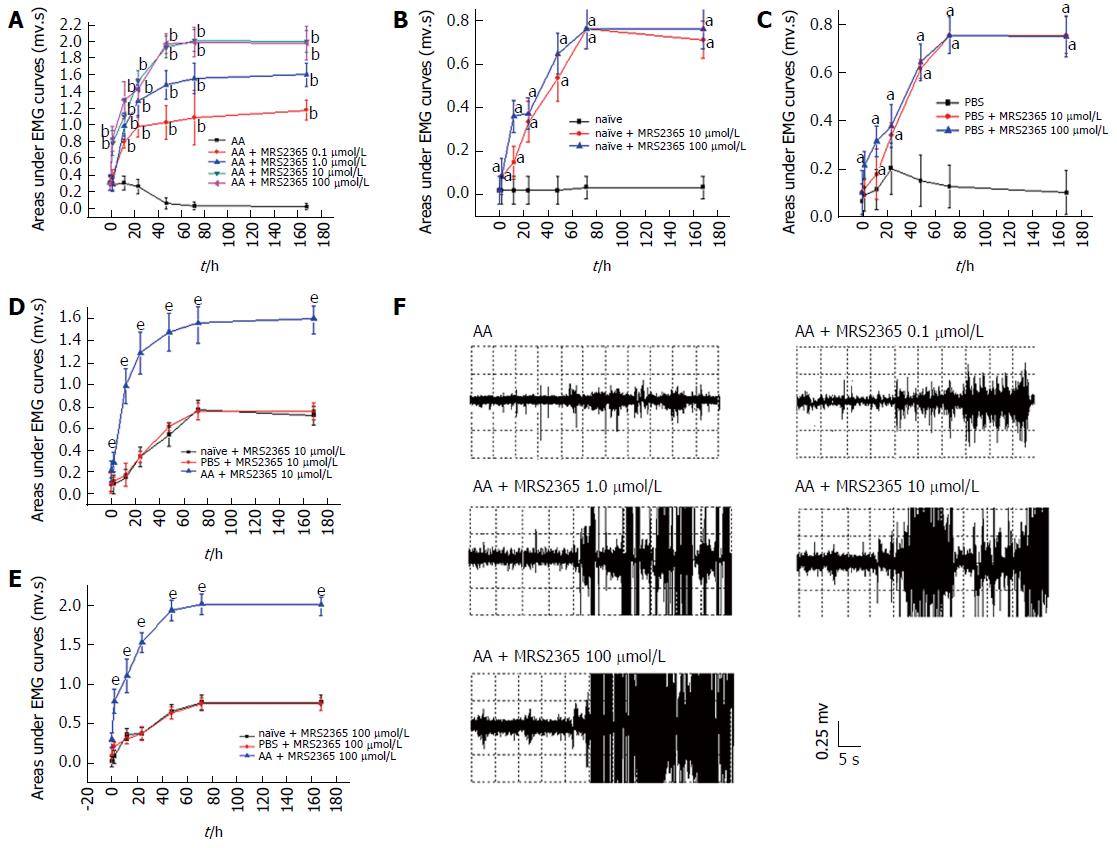Copyright
©The Author(s) 2017.
World J Gastroenterol. Sep 14, 2017; 23(34): 6339-6349
Published online Sep 14, 2017. doi: 10.3748/wjg.v23.i34.6339
Published online Sep 14, 2017. doi: 10.3748/wjg.v23.i34.6339
Figure 4 Concentration selection of MRS2365.
A: Treatment with the specific P2Y1R agonist MRS2365-evoked pain elicited a visceral motor response in AA rats upon colorectal distension. The AUC was significantly increased in all of the MRS2365 groups (0.1, 1.0, 10 and 100 μmol/L) compared with the AA control group. The MRS2365 doses at 10 and 100 μmol/L elicited the most effective result. There was no significant difference between the concentrations of 10 and 100 μmol/L; B and C: On naïve and PBS rats, MRS2365 at doses of 10 and 100 μmol/L was found to be effective at 2 to 168 h time points ; D and E: AUC of naïve, PBS and AA rats treated with MRS2365 at doses of 10 and 100 μmol/L. Significant differences were found between AA and naïve/PBS rats at doses of 10 and 100 μmol/L, while differences between naïve and PBS rats were not significant for the two doses; F: AUC of AA rats treated with MRS2365 (from doses of 0.1 to 100 μmol/L) at 72 h time point. aP < 0.05, bP < 0.01, eP < 0.0001 vs the control group. AUC: Area under the electromyography curve; AA: acetic acid; EMG: Electromyography.
- Citation: Wu J, Cheng Y, Zhang R, Liu D, Luo YM, Chen KL, Ren S, Zhang J. P2Y1R is involved in visceral hypersensitivity in rats with experimental irritable bowel syndrome. World J Gastroenterol 2017; 23(34): 6339-6349
- URL: https://www.wjgnet.com/1007-9327/full/v23/i34/6339.htm
- DOI: https://dx.doi.org/10.3748/wjg.v23.i34.6339









